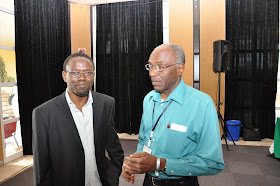
Research on the antioxidant and health properties of cowpea by scientists are beginning to show promise.
Cowpea and other legumes are a major source of protein, particularly for the poor, hence they are often called the poor man's meat. However, new research indicates that cowpea has the potential to combat diet-related health risks more commonly associated with wealthy populations such as heart disease, diabetes and other “lifestyle” health risks.
A new project led by Texas A&M University and funded by USAID-CRISP with research partners in Zambia, Kenya and South Africa is looking into the potential for cowpea to help prevent cancers and other cardiovascular diseases not only in Africa, but globally. This is the first project of its kind involving cowpeas of which Africa is a key producer.
"The problem is that we do not consume and promote foods that are rich in antioxidants, especially in Africa where diets are typically basic and monotonous, particularly among the poor," said Dr. Joseph Awika, the lead investigator of the project. "Additionally rich people once they get a bit of money graduate to the foods that are typically high in sugars and fat and very low in health-promoting components like antioxidants".
Antioxidants are substances that protect body cells against the effects of free radicals which are molecules produced when the body breaks down food or by environmental exposure to tobacco smoke and radiation. Free radicals can damage cells and contribute to heart disease and cancer.
According to the World Health Organisation (WHO), an estimated 16.7 million total global deaths - result from the various forms of cardiovascular disease (CVD), many of which are preventable by acting on unhealthy diet, physical inactivity, and smoking. WHO says more than 50% of the deaths and disability from heart disease and strokes kill more than 12 million people each year with 80 percent of them in developing countries.
Dr. Awika said the next step for the project would be to use human cell models in a laboratory to get quick, reliable data on biochemical properties of cowpea components. Then the next step would involve animal models fed cowpea-based products to measure specific outcomes which would lead to larger human intervention studies.
"Based on the limited evidence we have cowpea can be an important health food in the future," said Dr. Awika. "We are at the screening phase where we have used simple rapid tests to screen over 70 samples to select specific lines to focus on for a more detailed study."
- Busani Bafana
.gif)
















 ny in Africa, the crop is a critical source of food during the “lean period”–-the end of the wet season when food can become extremely scarce in semi-arid regions of sub-Saharan Africa.
ny in Africa, the crop is a critical source of food during the “lean period”–-the end of the wet season when food can become extremely scarce in semi-arid regions of sub-Saharan Africa.


